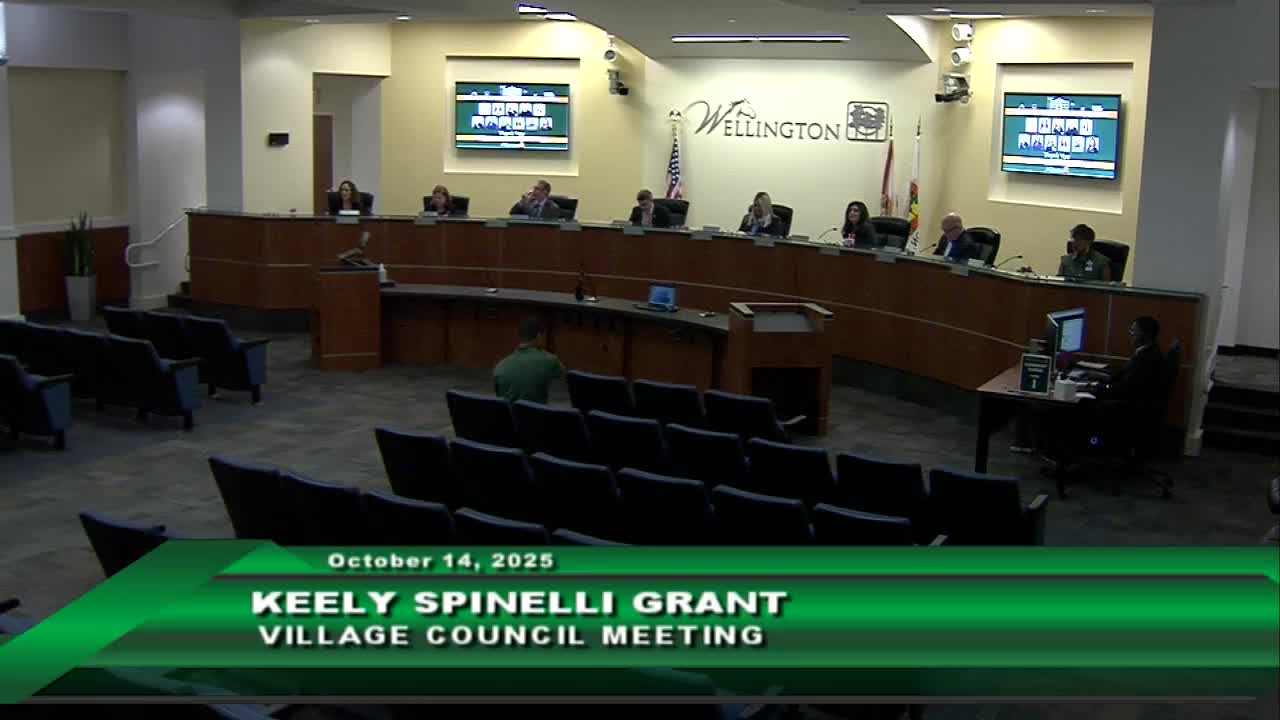Wellington residents rate quality of life high in 2025 Polco survey, response rate 12%
October 14, 2025 | Wellington, Palm Beach County, Florida
This article was created by AI summarizing key points discussed. AI makes mistakes, so for full details and context, please refer to the video of the full meeting. Please report any errors so we can fix them. Report an error »

Polco (National Research Center) presented the results of Wellington’s 2025 National Community Survey at the Oct. 14 village council meeting, reporting generally positive ratings across quality-of-life measures but noting a 12% response rate from the probability sample.
Polco project manager Jason Neumeier summarized key takeaways: strong overall quality of life; safety cited as a strength; governance ratings in line with national comparisons; a strong economic picture; infrastructure as a unique strength; and mobility services valued by residents. "Around 9 in 10 residents rated Wellington as a place to live, the overall quality of life in the village, and the overall image or reputation of Wellington as excellent or good," Neumeier said.
Neumeier explained methodology: a probability sample of 3,000 randomly selected households was mailed invitations; 344 completed surveys produced a 12% response rate and a margin of error of plus or minus 5% at the 95% confidence level. An open, self-selected online survey also ran later and produced 161 additional responses; the presentation and report cited the probability sample results (344 responses). Neumeier said Wellington’s response rate falls within Polco’s national rolling average of 12–18% and that increasing the absolute number of completed surveys (for example by adding outreach modes such as text) would reduce the margin of error.
Council members asked about representativeness, ways to increase participation, and which communities were used for benchmarking. Neumeier said Wellington’s results were compared to a national benchmark database of roughly 500 communities and to a custom Florida comparison group of about 30 communities; he offered to provide the specific Florida comparison list to council staff. Council members also discussed particular results, noting high ratings for garbage collection, stormwater management and other utility services, and expressing interest in improving response rates for future surveys.
The presentation concluded with council direction to explore higher outreach effort in future survey rounds to increase response counts and reduce margin of error. No formal action was taken; the presentation was informational.
Polco project manager Jason Neumeier summarized key takeaways: strong overall quality of life; safety cited as a strength; governance ratings in line with national comparisons; a strong economic picture; infrastructure as a unique strength; and mobility services valued by residents. "Around 9 in 10 residents rated Wellington as a place to live, the overall quality of life in the village, and the overall image or reputation of Wellington as excellent or good," Neumeier said.
Neumeier explained methodology: a probability sample of 3,000 randomly selected households was mailed invitations; 344 completed surveys produced a 12% response rate and a margin of error of plus or minus 5% at the 95% confidence level. An open, self-selected online survey also ran later and produced 161 additional responses; the presentation and report cited the probability sample results (344 responses). Neumeier said Wellington’s response rate falls within Polco’s national rolling average of 12–18% and that increasing the absolute number of completed surveys (for example by adding outreach modes such as text) would reduce the margin of error.
Council members asked about representativeness, ways to increase participation, and which communities were used for benchmarking. Neumeier said Wellington’s results were compared to a national benchmark database of roughly 500 communities and to a custom Florida comparison group of about 30 communities; he offered to provide the specific Florida comparison list to council staff. Council members also discussed particular results, noting high ratings for garbage collection, stormwater management and other utility services, and expressing interest in improving response rates for future surveys.
The presentation concluded with council direction to explore higher outreach effort in future survey rounds to increase response counts and reduce margin of error. No formal action was taken; the presentation was informational.
View full meeting
This article is based on a recent meeting—watch the full video and explore the complete transcript for deeper insights into the discussion.
View full meeting